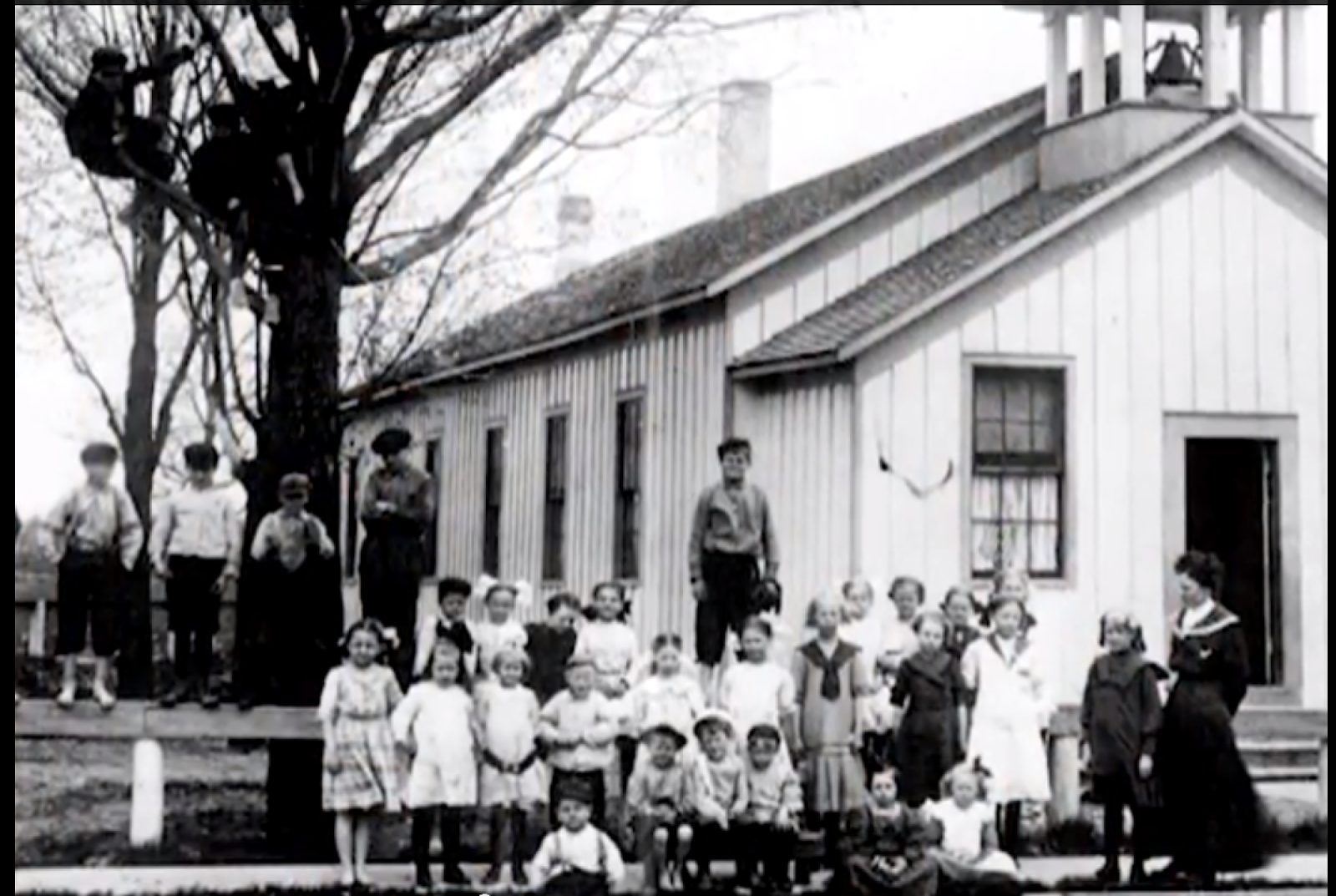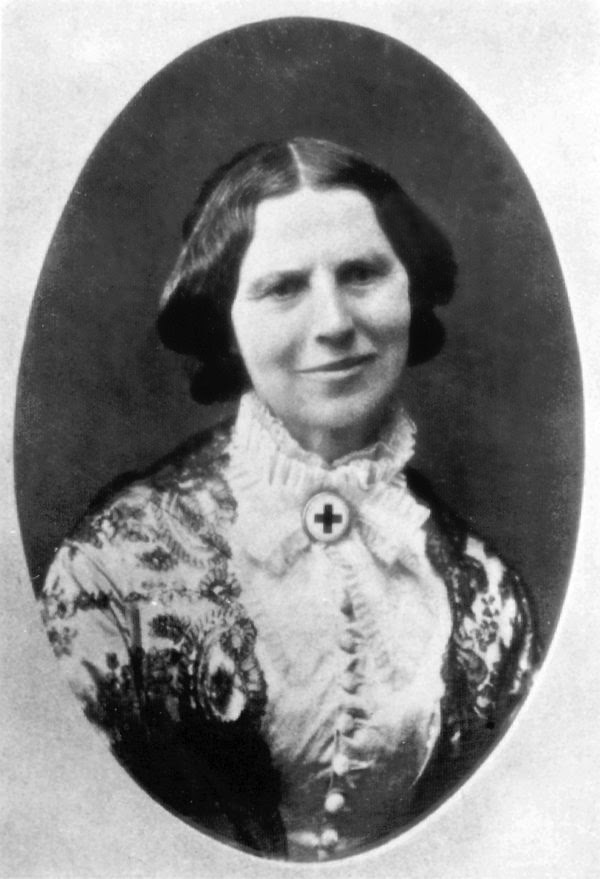Shy, timid Clara was just ten when she found her first calling, nursing. When her brother David fell from the roof of a barn and received a severe injury, she insisted she be given the task of nursing her brother. Her parents wanted her to attend more social gatherings and become more outgoing, while she preferred a quieter life. After much badgering from her, they finally acquiesced. David’s doctors taught Clara how to distribute the prescribed medication to her brother, as well as how to place leeches on his body to bleed him. (Bloodletting was a regular treatment during this time.) David grew progressively weaker, and the doctors gave up hope of a recovery. She did not, and convinced her parents to stop letting David be bled. Her faith and persistence paid off; David made a full recovery.
 |
| Little Texas Schoolhouse Center standing - Peter Bailey, who Clara cared for at Chantilly Credit: Tim Lowry |
Following these studies, Clara opened a school in Bordentown, New Jersey, the first free school in the state. Under her leadership, the enrollment surpassed 600 students, but in 1855, when it was time to hire a new principal, Clara was passed over in favor of hiring a male headmaster. Frustrated being deemed “female assistant”, she resigned from the school and moved to Washington D.C., where she was hired as a clerk in the US Patent Office and became the first woman to officially hold a government job in U.S. history. For the first time in history, a woman was hired to not only a substantial clerkship in the federal government, but paid wages equal to a man's salary. Rising political opposition to women working in government offices led to her position first being reduced to “Copyist”, and in 1856, the James Buchanan administration eliminated it entirely and she returned to Massachusetts. After Abraham Lincoln was elected in the fall of 1861, Clara returned to the patent office as a temporary copyist, hoping she could make way for more women in government service.
Not long after, the Civil War began in earnest. Before her father died in March 1862, Clara discussed the war effort with him. Mr. Barton convinced his daughter that it was her duty to help, telling her, “Remember, next to heaven, our highest duty is to serve our country and support its laws.” (1) The following month, Clara returned yet again to Washington to gather medical supplies, and in August of 1862, she finally was granted permission from Quartermaster Daniel Rucker to work on the front lines, but under the restriction that she was merely a volunteer, not a paid worker, and the only help she would get would be volunteers she recruited. Eventually, after proving her worth alongside the battlefield, she would be assigned soldiers to help her.
During her time with the Army of the Potomac, she distributed supplies, cleaned field hospitals, triaged and nursed the sick and injured, and served food to soldiers, often in close proximity to battles. She was alongside the battlefield at Cedar Mountain, (Second) Bull Run, Antietam, and Fredericksburg. In 1864 she was appointed by Union General Benjamin Butler as the "lady in charge" of the hospitals at the front of the Army of the James. One of her most harrowing experiences came at Antietam, when a stray bullet tore through the sleeve of her dress without striking her but killed the man to whom she was tending. At Fredericksburg, she ran across a bridge to care for the injured with bullets flying on either side of her. She was unharmed, but later that evening one of the men noticed her gown “sparkled.” She fanned out her skirts and the men counted thirty holes from bullets that had torn through her dress without injuring her. Again she earned the men’s respect by proving herself to be as strong as them, and became known as the “Angel of the Battlefield.”
 |
| Antietam Battlefield: The path from "Clara's field" to the battle. |
However, Clara could not completely leave her vocation behind. In 1869, during her trip to Geneva, Switzerland, Barton was introduced to the Red Cross movement. She was also introduced to Henry Dunant's book A Memory of Solferino, which called for the formation of national societies to provide relief for those affected by tragedy. Having been on the front lines of war, like Dunant, she recognized the need for an organized way to care for both soldiers and civilians. When she returned to the United States, the American branch of the Red Cross met for the first time on May 21, 1881, and the first local chapter was founded in 1882 in Dansville, New York, where Clara had a “country” home.
 |
| Clara Barton circa 1878 U.S. Public Domain |
Criticism arose of her careless management of the American Red Cross and her advancing age, Barton resigned her presidency in 1904. Again, she was forced out of office by male opinion, and replaced by a new generation of all-male scientific-experts who reflected the realistic efficiency of the Progressive Era rather than her idealistic humanitarianism. Undeterred from continuing to serve the sick and injured, Barton retired to Glen Echo, Maryland and founded the National First Aid Society. She also used her retirement to write and publish an autobiography; The Story of My Childhood was published in 1907. She contracted tuberculosis and died in her Glen Echo home at the age of 90.
In hindsight, it’s not difficult to believe how much good Clara Barton accomplished in her life -- she was born on Christmas Day and died on Good Friday! She was tenacious in caring for first her brother, her students, "her" boys on the battlefield, and eventually the citizens of the world. She worked a man's job for a man's pay, but then left it behind to volunteer as a war nurse. She strove to bring care to where it is needed, rather than waiting for the the opportunity to do good to appear to her. Her goal to always have someone who cares be available to help continues in the missions of the American Red Cross.
(1) Benge, Janet and Geoff Benge. Clara Barton: Courage under Fire. Lynnwood, Washington: Emerald Books, 2003. Print.

©2012- 2015 Adventures with Jude. All rights reserved. All text, photographs, artwork, and other content may not be reproduced or transmitted in any form without the written consent of the author. http://adventureswithjude.com


No comments:
Post a Comment